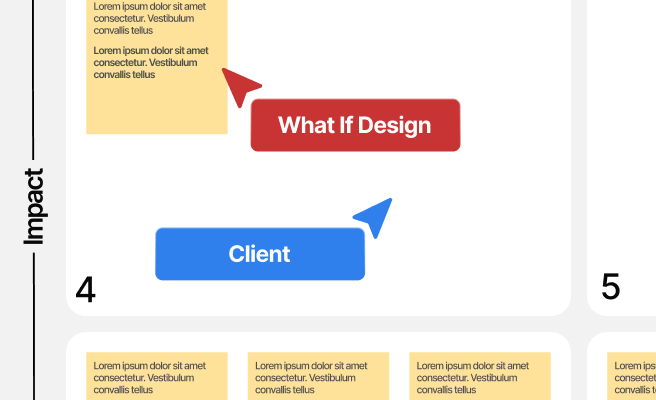User Testing
<p>User testing is a crucial phase in product design, particularly for digital solutions. It involves evaluating a product by testing it with real users to gather insights about the overall experience, usability, and potential issues that might not be apparent during the initial design phase. This process is especially important in climate tech, where products must be both functional and sustainable.</p>
<p>Historically, user testing has evolved from simple observation techniques to sophisticated methods involving heatmaps, A/B testing, and eye-tracking. In the digital age, it provides a way to ensure that products meet the needs and expectations of users, ultimately leading to higher satisfaction and better market fit.</p>
<h2>Types of User Testing</h2>
<p>User testing can be broadly categorized into several types, each serving a specific purpose. Here are a few common types:</p>
<h3>1. Usability Testing</h3>
<p>This involves observing users as they interact with a product to identify usability issues. For example, a climate tech company might test a new app designed to track carbon footprints by having users complete specific tasks.</p>
<h3>2. A/B Testing</h3>
<p>In A/B testing, two versions of a product are compared to see which performs better. This is often used in web design to determine the most effective layout or design elements. An example might be testing two different call-to-action buttons on a website to see which one gets more clicks.</p>
<h3>3. Beta Testing</h3>
<p>Beta testing involves releasing a product to a limited audience before a full-scale launch. The feedback collected helps in making final adjustments. This is particularly useful for software products in the climate tech industry, such as energy management systems.</p>
<h2>Benefits of User Testing</h2>
<p>User testing offers numerous benefits that can significantly impact the success of a product:</p>
<ul>
<li><b>Improved Usability:</b> By identifying and addressing usability issues, user testing ensures that the product is user-friendly and intuitive.</li>
<li><b>Enhanced User Satisfaction:</b> Products that meet user expectations are more likely to succeed in the market, leading to higher user satisfaction.</li>
<li><b>Cost Efficiency:</b> Detecting problems early in the design process can save time and resources that would otherwise be spent on post-launch fixes.</li>
</ul>
<h2>Challenges in User Testing</h2>
<p>While user testing is beneficial, it also comes with its own set of challenges:</p>
<ul>
<li><b>Recruiting Participants:</b> Finding the right participants who match the target user profile can be difficult and time-consuming.</li>
<li><b>Interpreting Feedback:</b> Analyzing user feedback to make actionable decisions can be complex, especially when feedback is contradictory.</li>
<li><b>Maintaining Objectivity:</b> Biases can creep in during testing or analysis, affecting the accuracy of the results.</li>
</ul>
<h2>Best Practices for Effective User Testing</h2>
<p>To conduct effective user testing, consider the following best practices:</p>
<h3>1. Define Clear Objectives</h3>
<p>Clearly outline what you aim to achieve with the user testing. This helps in focusing the testing process and gathering relevant data.</p>
<h3>2. Use Realistic Scenarios</h3>
<p>Create scenarios that closely mirror real-world use cases. For instance, if you're testing a climate tech app, have users simulate activities they would perform in their daily lives.</p>
<h3>3. Collect Quantitative and Qualitative Data</h3>
<p>Gather both types of data to get a comprehensive view of user experience. Tools like <a href="https://www.hotjar.com/" style="color: #2896FF; text-decoration: underline;">Hotjar</a> and <a href="https://www.usertesting.com/" style="color: #2896FF; text-decoration: underline;">UserTesting</a> can be used to collect and analyze this data.</p>
<h2>Case Study: User Testing in Climate Tech</h2>
<p>Let's consider a real-world example from the climate tech sector. A company developing a smart thermostat aimed to reduce energy consumption in homes. They conducted comprehensive user testing to understand how different demographics interacted with the device. Through usability testing, they discovered that older users struggled with the touch interface. This insight led to the addition of voice commands, greatly improving user satisfaction and product adoption.</p>
<h2>Conclusion</h2>
<p>User testing is an indispensable part of the product design process, ensuring that digital solutions are both user-friendly and aligned with market needs. By following best practices and addressing challenges proactively, companies can leverage user testing to create impactful and successful products. To learn more about improving your user testing strategies, <a href="https://www.nngroup.com/articles/usability-testing-101/" style="color: #2896FF; text-decoration: underline;">click here</a>.</p> <p>Increase user engagement that converts your demos into sales. Optimise your UX strategies with our audits.
<p>Fill out the <a href="https://tally.so/r/n97pxQ" style="color:#2896FF; text-decoration:underline;">UX Audit form</a> to get started. Ready to discuss your needs? <a href="https://cal.com/akhilak/what-if-design?duration=25" style="color:#2896FF; text-decoration:underline;">Book a consultation call</a> with us today.</p></p>

Let's scale your impact with great design.
Free consultation, no sales pitch
Thank you! Your submission has been received!
Oops! Something went wrong while submitting the form.
Let’s talk
Nothing great is built alone.
Let’s connect about your vision, our work and how we can collaborate.
Get in touch

